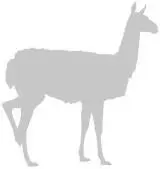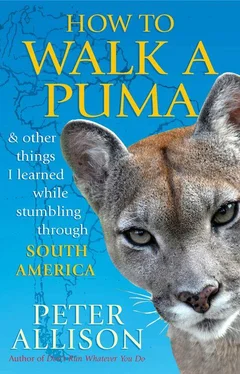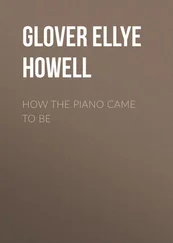I pondered this while gazing absentmindedly at an Argentinian woman with a flushed-faced baby waiting for a bus that would take her back in the direction we had just come. There was something odd about the baby that I couldn’t quite put my finger on. Then I realised that its cheeks were not merely ruddy, but blotched, blasted and burned, not by sun but by the abrasive air. I sympathised with it, already feeling a cold sore developing that would eventually take the shape of Italy, and become almost the same size.
Then it hit me. They might build roads in Patagonia, they might catch every armadillo and put a trinket store on every corner. But the place could never be tamed while that wind blew, and that thought, as well as my impending date with Lisa, made my cracked lips spread into a painful smile.
The Joy of Pessimism

Over steaks and malbec (Argentina’s signature wine), Lisa and I discovered that our travel plans overlapped in many places, and we decided to tackle South America together for a while. Ange chaperoned us for one night only before her short trip ended, leaving the Minke and me to continue on the road as a twosome. After two more nights in Bariloche we would start making our way by bus yet again (the Andes are a dramatic addition to South America’s scenery, but have precluded much of the continent from developing railways). We began a meandering journey into Bolivia, and took the unappealingly named Death Train (so called allegedly because for every passenger inside there used to be one surfing the roof, and many fell off as fatigue or alcohol loosened their grip) to the Brazilian border.
‘Do you really not mind me calling you the Minke?’ I asked one day, fearful that she might just be tolerating it out of politeness.
‘No, I really do like it! But you can use my name at times if you can remember it.’
‘Of course I do.’ I paused, as if dredging my memory. ‘Ailsa? No, that’s not it. Alisa? No, close, I’m sure …’ and she gave me a playful wallop; while I was thrilled at the contact I was also startled by her reach. If we did get together, as I hoped, I was very glad that I was a runner, not a fighter.
We made our way across Bolivia and into Brazil, arriving at the town of Miranda, and there we met a guide who had been recommended to me, a burly man with the strong, angular features of the region’s indigenous people, the Kadiweu people. His name was Marcello, and he was passionate about the very animal I so wanted to see.
Soon after meeting Marcello I decided I liked him, for a strange reason. We were travelling towards the Pantanal, a famous wetland often compared to my beloved Okavango Delta in Botswana, a haven for wildlife of all sorts. We’d gone there to see the astonishing birds it was known for, as well as capybaras (the world’s largest rodent, a guinea pig that weighs more than a supermodel), alligators and tapirs, an animal that is pig-shaped and elephant-snouted but is in fact most closely related to rhinos and horses. The Pantanal is also famous for jaguars.
As well as being extremely knowledgeable about the Pantanal, Marcello also had an affinity for the big cat I sought. He was intrigued by my background as a guide, and as we drove from Miranda into the wetlands we swapped stories of lunatic tourists before reverting to the topic we both loved most—animals. I briefly wondered whether he might be putting on a passion he didn’t really feel as part of his customer service.
The road we were on was tarred, and the few cars we encountered were travelling fast. Cane grew high on either side of the road; suddenly a scraggly-looking chicken stepped out from the tight clusters of cane and decided to cross the road, intent, it seemed, on suicide. By sheer chance, at that exact moment a car appeared, coming towards us, which meant that to swerve around the chicken would result in a head-on collision. So Marcello held his course, and there was a loud dong from under the vehicle.
‘I’m so sorry,’ Marcello said. ‘So sorry,’ he repeated, and I could see his brown knuckles go a shade paler from gripping the wheel so tightly. Maybe he wasn’t apologising to the chicken, maybe it was to the Minke and me, but I could see a real tear in his eye. This was exactly the sort of guide I wanted.
Marcello knew my aim—to see a jaguar in the wild, along the way picking up as many other feathered and furred species as I could.
‘It is not the right season for jaguars,’ he said, ‘but you never know.’
I’d said exactly the same thing over the years to tourists who hoped to see some elusive bird or animal, and as much of a platitude as it sounds, it’s true: you never do know. Jaguars tend not to migrate, but in the drier season they have more open land to roam in, and are thus harder to find. For some reason, though, I was feeling lucky, and was sure that we would see a jaguar in our few days with Marcello.
While we were in Miranda, the Minke and I had met Marcello’s wife, Miranda, plus his three dogs, including a puppy he’d rescued from a caiman (a type of alligator). The puppy’s mother had been poisoned by some hard-hearted individual, and she had died beside the lagoon edge. A caiman had appreciated the easy meal, and had also taken several of her mourning puppies before Marcello grabbed the sole survivor. The Minke had become enamoured with the puppy as soon as she met him, and I think she was just as happy seeing him as any jaguar. But before we even tried to meet a jaguar, almost impossible in the heat of the day, we would meet the caiman.
‘It’s huge!’ Marcello said. ‘Huge!’ he reiterated. ‘At least eight feet!’
Two and a half metres? I almost snorted in a way that would have revealed my wildlife snobbery. In both Australia and Africa, ‘huge’ means a crocodile is at least twice the size of a human. (There are records in both places of crocodiles over six metres long; the skeleton of a true dinosaur estimated to have been ten metres was once recorded in Australia.) Two and a half metres is large enough to do damage, but I doubted such an animal could take you down. Still, our plan was to swim with it, and that made my armpits a little sticky.
‘It was right there,’ said Marcello, indicating the spot with a machete he kept holstered on his belt at all times (I wondered if he slept with it). ‘Huge!’ he said again, and I started to like him more, just for his enthusiasm.
The Minke and I changed into swimwear, Marcello just waded into the water in his black T-shirt and shorts, and soon we were in a lagoon beside a gently flowing stream. We paddled around, Marcello explaining that the caiman was curious and would often bob to the surface, and slowly approach, coming as close as a foot away. There were also piranhas in the water, but I was less nervous about them. I had read that despite their mythic voraciousness for meat, most piranhas are primarily vegetarian but will scavenge on occasion, and only if trapped in a shrinking pool turn into savage flesh-tearing monsters.
We paddled around, and I even went into the deeper water, but the caiman didn’t show and it occurred to me that if it had recently eaten a poisoned dog it could well not be in the best of health. Then again, reptile digestive systems can handle almost anything.
As we came out of the water Marcello pointed to a tree down the road, and we approached it. The tree had four vertical scratches carved deep into the bark. This was territorial marking by a big cat, something I was used to from the jaguar’s African cousins. But these were widely spaced, and high up. The animal that had made these was huge.
Читать дальше













